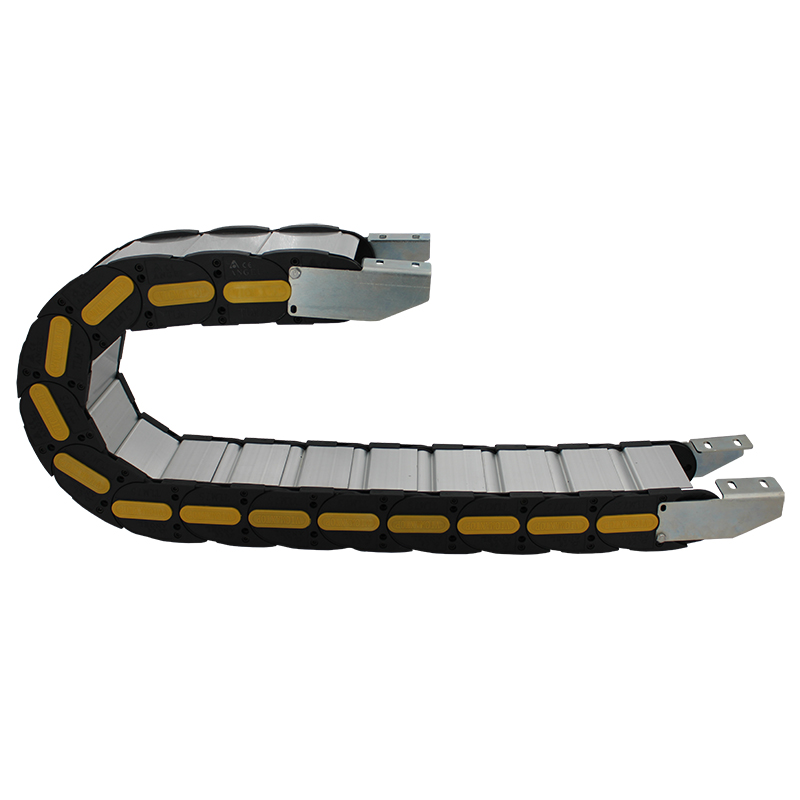Compact Cable Carrier Solutions for Efficient Cable Management and Protection
Understanding Miniature Cable Carriers Essential for Modern Mechanics
In the ever-evolving world of engineering and robotics, the demand for efficient and reliable components has never been more critical. One such component that has gained acclaim in various industries is the miniature cable carrier. These compact devices are pivotal for organizing and protecting cables and hoses in a multitude of applications, from small machinery to advanced robotics.
What are Miniature Cable Carriers?
Miniature cable carriers, often referred to as drag chains, are mechanisms designed to guide and protect moving cables and hoses. They are typically constructed from durable materials, such as plastic or metal, and come in various sizes, shapes, and configurations to meet the specific needs of different applications. The primary purpose of these carriers is to ensure that cables do not become tangled, pinched, or damaged during operation, which can lead to system failures and costly downtime.
Importance of Miniature Cable Carriers
1. Space Efficiency One of the standout features of miniature cable carriers is their compact design. Industries such as automation, robotics, and CNC machining often face challenges related to space constraints. Miniature cable carriers allow for effective management of cables in tight spaces, ensuring that systems remain organized and functional.
2. Protection Against Wear and Tear Cables and hoses can be susceptible to environmental factors and mechanical stresses. Miniature cable carriers shield these components from abrasion, oils, chemicals, and other potentially harmful substances. By providing a protective enclosure, they significantly extend the lifespan of electrical and hydraulic systems.
3. Smooth Motion and Reduced Friction Miniature cable carriers are engineered to facilitate smooth motion. They can guide cables in a controlled manner, minimizing friction and wear. This is particularly crucial in dynamic applications where movement occurs regularly, such as in robotics and automated machinery. The reduction of friction also translates to improved efficiency and energy savings.
miniature cable carrier

4. Versatility These carriers can be used in a broad range of applications. From 3D printers and medical devices to pick-and-place robots, miniature cable carriers can accommodate various cable types, including power cables, data cables, and pneumatic hoses. Their versatility makes them a preferred choice for engineers and designers looking for reliable cable management solutions.
5. Ease of Installation and Maintenance Miniature cable carriers are designed for easy installation. Many come with modular features that allow users to add or remove links as needed, accommodating changing system requirements without extensive rework. This adaptability simplifies maintenance and can lead to significant time and cost savings.
Applications of Miniature Cable Carriers
Miniature cable carriers find their place in numerous industries
- Industrial Automation In assembly lines, robotic arms move with precision, guided by miniature cable carriers that safeguard essential cables, ensuring seamless operation. - Medical Equipment Equipment such as MRI machines and robotic surgical devices utilize cable carriers to maintain the integrity of their integrated systems, even when moving and adjusting. - CNC Machining These carriers help manage cables in CNC machines, allowing for precise movements without risking cable damage. - Aerospace and Automotive Miniature cable carriers play a crucial role in managing electrical systems in aircraft and vehicles, where reliability and safety are paramount.
Conclusion
Miniature cable carriers are a quintessential component in modern mechanical and automation systems. Their ability to organize, protect, and ensure smooth motion of cables and hoses makes them invaluable across various industries. As engineering technology continues to advance, the role of these compact carriers will likely expand, driven by the need for efficiency, reliability, and space management in increasingly complex systems. Investing in high-quality miniature cable carriers can lead to enhanced performance, reduced maintenance costs, and ultimately, greater operational success. As such, they represent not just a solution, but a vital element in the machinery of the future.








